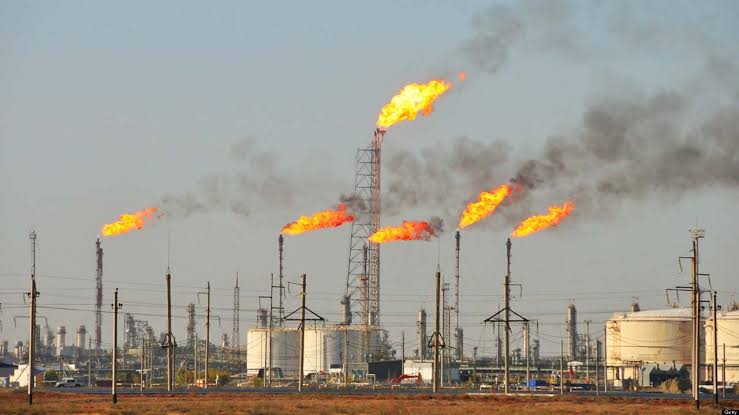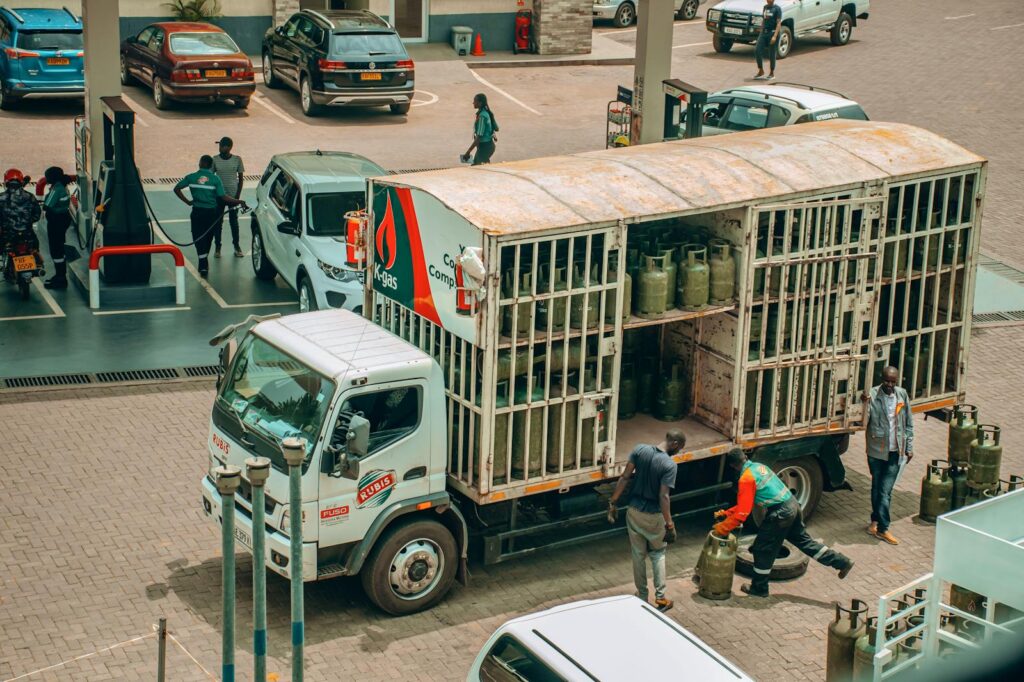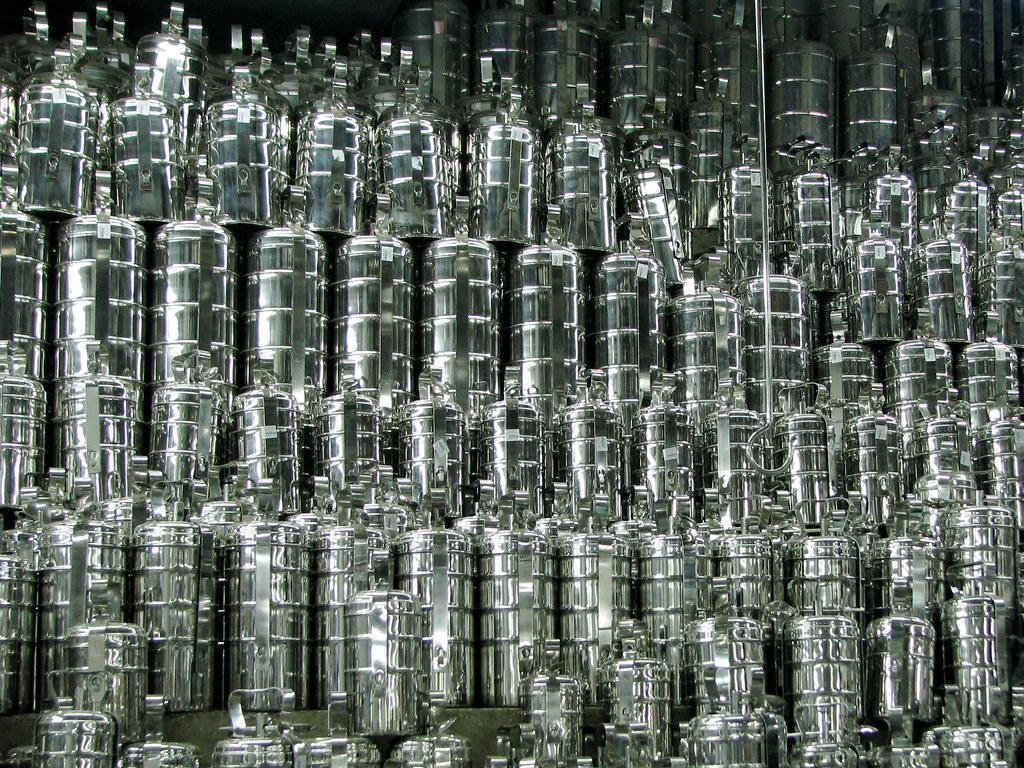
Energy costs for households and industry are changing significantly, driven by a combination of factors including global market dynamics, trade policies and government actions. From gas cylinders used in Nigerian homes to large oil fields across the United States, price fluctuations are reshaping economic calculations, providing relief in some areas but also creating uncertainty and fear for businesses in the sector.
In Nigeria, there has been a ray of hope for families struggling with the high cost of living. The price of liquefied natural gas (LPG) has dropped. The latest price list shows that the cost of refilling a 12kg gas cylinder has decreased compared to previous prices, providing some relief to consumers across the country.
This change in local gas prices is in line with trends in the global crude oil market, which recently fell below the $70 per barrel mark. The latest data from Nigeria shows that some tank farm owners have adjusted their prices in response to these external factors. The adjustments made by refineries such as Dangote Refinery have been particularly noticeable.
According to data released by Petroleumprice.ng, as of Tuesday, May 20, Dangote Refinery was offering the lowest price of Liquefied Petroleum Gas (LPG) at N855 per kg. This was a decrease of N10 or 1.16% compared to the previous day. Other major depots also slightly reduced their pricing structures.

For instance, Ardova was selling at N915 per kg, down by N10 or 1.08%. Similarly, NIPCO Lagos and 11 Plc were selling at N920 per kg, both down by N5 or 0.54%. However, the price adjustment was not immediate at all warehouses; Rainoil Lagos and A.A. Rano were selling at N920 per kg with no adjustment recorded.
Despite the slight reduction in wholesale prices, the impact on retail prices faced by consumers remains modest. Cylinder refills are still priced at around N1,200 per kg for consumers across Nigeria. This is a sharp increase compared to the price of N950 per kg during the same period last year.
A recent market survey provided insights from local dealers. Kunle Ajami, a manager at a cooking gas plant in Lagos, confirmed that the price adjustment started about a month ago. He noted that while warehouse prices have fallen, the overall price reduction does not represent a material difference given all the other costs associated with getting the product to consumers.

“While the warehouse prices have come down, the difference is not that big considering all other costs. That’s why we are still selling at the current prices,” Ajami explained. He even mentioned that their factory does not sell 1kg quantities to customers. He provided a price list showing that the cost ranges from 1,200 Naira for 1kg to 60,000 Naira for a 50kg cylinder.
The dynamics of the Nigerian LPG market appear to be heavily influenced by the major players. Commenting on this, Olatide Jeremiah, energy expert and CEO of Petroleumprice.ng, noted that Dangote Refinery has actually squeezed out private warehouse owners and importers. He attributed this to the continuous downward price pressure exerted by Dangote.
Elaborating on Dangote’s market position, Jeremiah noted that “with his strong storage and truck loading capacity, he currently controls 50% of the LPG market, which gives him an advantage over other players who have to deal with import barriers.” He added that Dangote has been consistently lowering LPG prices, thereby forcing private gas station owners to compete in the market.
In a move to further ease the burden of rising costs on Nigerian consumers, the government has taken direct action. Legit.ng reports that the Nigerian government has suspended the export of locally produced cooking gas. The directive was revealed by the Minister of State for Petroleum Resources (Natural Gas), Ekperikpo Ekpo.

The main objective of the executive order is to prioritize domestic supply over exports. By ensuring increased domestic LPG supply, the government aims to reduce prices and provide relief to the people. The directive was detailed in a statement issued by the minister’s spokesperson, Luis Igba, following a high-level meeting between the government and key stakeholders in the cooking gas value chain in Abuja.
Meanwhile, across the Atlantic, the US crude oil market has experienced sharp fluctuations due to a range of global economic factors. The US crude oil benchmark, the front-month New York Mercantile Exchange West Texas Intermediate (NYMEX WTI), briefly fell below the worrying $60 per barrel mark on a recent Monday. This is the first time oil prices have fallen below this level in four years, marking the lowest point since April 2021 when the pandemic was still spreading.
The sharp drop in oil prices below $60 per barrel has raised concerns about the country’s record high production. Concerns around tariffs and potential economic slowdown are considered the main reasons for the drop in oil prices. Although oil prices rebounded slightly to settle at $60.70 per barrel in late afternoon, the brief plunge highlighted the underlying anxiety in the market.
Concerns about the Trump administration’s tariffs are seen as the main factor behind the drop in oil prices. However, growing concerns about global demand had been building for months before that. The drop in oil prices was further exacerbated last week by OPEC’s unexpected announcement of its intention to increase production, which brought more supply to a market already facing demand uncertainty.

Energy analysts believe that the $60 per barrel oil price level is a critical threshold for the U.S. oil industry. Typically, oil producers will begin to scale back production at this price and eventually consider production cuts. In early April, oil prices briefly broke through $70, which makes the recent drop in oil prices particularly obvious to industry insiders.
Marshall Adkins, head of energy at Raymond James, commented on the impact of oil prices reaching this level. He was unequivocal: “If oil prices reach $60, the U.S. economy will slow down. There is no doubt that production will fall. But it will not happen overnight.” He described the sudden turn of the market with vivid pictures, saying: “We are like being hit on the head with a bat. We are trying hard to take action.” For Adkins, the general mood in the market can be summed up in one word: “uncertainty.”
The current production of the United States is impressive, with crude oil production approaching 13.6 million barrels per day according to the U.S. Energy Information Administration. This is a significant increase from about 11.3 million barrels per day in April 2021. Since the outbreak, the U.S. oil industry has been oscillating between growth and stability — what you might call “maintenance mode” — until the recent oil price volatility hit a major setback.
Putting oil prices in a broader context, Adkins emphasized the lower bar. While oil industry activity has retreated to around $60 a barrel, he warned that $50 “would be a disaster for everybody.” Conversely, by his assessment, a significant increase in oil prices, or a return to the kind of expansion typically associated with slogans like “Drill it, baby, drill it,” would likely require oil prices at or above $85.

Research firm Rystad Energy estimates that the average breakeven price required for the U.S. oil industry to be profitable is $62 per barrel. Matthew Bernstein, Rystad’s vice president of North American oil and gas, noted that given that production growth outside the Permian Basin in the lower 48 states is unlikely, if oil prices continue to fall below profitability, slowing production in the most productive oil field will slow projected production growth rates through 2025.
Producers across the country are indeed feeling the effects of lower oil prices and higher costs for key inputs such as steel. J. Nelson Wood, an Illinois oil industry executive, shared his experience. He was about to start a multimillion-dollar drilling project, but President Donald Trump’s tariffs complicated his plans considerably.
Wood explained that the cost of the pipeline required for his project doubled due to Trump’s tariffs on steel imports. Meanwhile, his oil prices have fallen by about 17% this year. The drop comes amid concerns that the increased costs of tariffs will slow economic growth, thereby reducing oil demand. The combination of rising costs and falling prices makes it financially difficult for him to continue drilling for more oil at this time.
Elucidating the challenges facing the industry, Wood said: “It’s hard to have the confidence to invest when markets are in a state of volatility and fear, which is where we are right now.” He highlighted the prevalence of the current market environment, adding: “There is a lot of uncertainty, and that uncertainty is holding back many projects – from individuals of my size to large businesses.”

His view is shared by other U.S. oil producers. Many producers say they are reconsidering new drilling projects and are actively seeking ways to reduce costs. The U.S. government’s trade war rhetoric has not only depressed oil prices, but has also driven up the cost of necessary drilling materials through tariffs. In addition, widespread concerns about a tariff-induced economic slowdown are significantly affecting companies’ investment decisions.
While President Trump recently announced a suspension of some tariffs, additional 10% tariffs on some countries remain in effect, as do tariffs on steel. Notably, imported oil, including oil originating from Canada, is not subject to these tariffs, provided that producers can provide documentation proving it is produced in North America. However, the broader problems facing the oil industry show that tariffs can have a negative impact even on industries not directly affected by tariffs.
“Drill, baby, drill” was a common slogan during President Trump’s campaign, reflecting his promise to significantly increase U.S. oil production. Increasing oil production is also a centerpiece of Treasury Secretary Scott Bessant’s stimulus plan, which includes a call to increase oil production by 3 million barrels per day to reduce inflation by lowering gasoline prices for consumers.

Navigating these turbulent situations requires stability and a clear understanding of the factors that determine not only the bottom line of businesses, but also the daily expenses of households and the economic health of entire regions that rely on energy production.
Related posts:
Cooking Gas Prices Crash, Dealers Release New Price List
U.S. oil prices dip below nerve-wracking $60 threshold with record-high production in the balance
How Trump’s tariff moves are undercutting his ‘drill, baby, drill’ oil push




